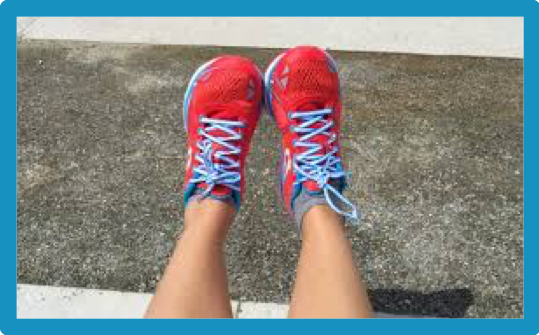Eating Disorders in Athletes Part 2
In my practice at New Hope Counseling and Wellness Center, I have worked with several athletes, both novice and competitive. I thought it would be a good idea to do this two part series on eating disorders in athletes to discuss 1) the prevalence and 2) treatment. Click here to read the first part.
An individual with an eating disorder may have or develop excessive, obligatory or compulsive exercise. It’s estimated that up to 80% of people with anorexia nervosa engage in this behavior. Additionally, individuals with bulimia nervosa may engage in this behavior as a form of purging food that they have consumed. Both short and long-term effects of excessive exercise can dangerous, especially if the person is continuing to exercise excessively while injured or sick. Medical complications may include:
- Increased risk of illness
- Malnutrition
- Insomnia
- Amenorrhea
- Increased risk of mood disorders
Warning Signs
- Extreme or rigid rules
- Continuing to exercise when injured or sick
- Becoming anxious, angry, or sad if a workout is missed
- Missing social, school, or work obligations in order to workout
Recovery Process
Typically, weight and nutritional stabilization is the first priority. Activity will be limited until this goal is achieved. Many treatment centers offer gentle yoga class. The rest period enables restoration and stabilization of metabolic function. The treatment team will often do an assessment to determine whether the eating disorder pre-dated the exercise or exercise and athletics have always been an important part of the individual’s life. In the former, it will be more important to focus on ways to cope with stress, anxiety, depression, and other factors that led to the desire to engage in compulsive exercise. The individual can gradually return to a healthy amount of activity under the supervision of the treatment team.
What about Athletes?
Now, when I refer to athletes, I am not talking about an adolescent that is still growing, developing, and learning in school. The treatment for competitive or elite athletes may be different, depending on a thorough medical assessment. We know that athletes are more likely to develop an eating disorder compared to non-athletes. In this case, the treatment team along with the support of the athlete’s support system will determine whether or not exercise can be incorporated into the treatment team. There are treatment centers that have specialty programs offering additional assistance to athletes. If the athlete begins to incorporate training while in treatment, the staff will closely monitor the exercise, intake, and feelings the athlete is experiencing. Athletics can become closely tied to an individual’s identity similar to the eating disorder. This is something that needs to be discussed in therapy. The individual needs to discover new and different things that create life outside of both the eating disorder and athletics in order to fully heal from the eating disorder. An athlete can often use the return to sport as motivation for recovery. Because of this external motivation, close follow-up is recommended to ensure behaviors to not resume once the athlete is released from treatment.
If you think you may be struggling with excessive exercise, you may contact me for more information. HOPE is available and FULL Recovery is Available.
References
Goldsmith E. How Much Should You Exercise While Recovering from an Eating Disorder. Recovery Warriors. https://www.recoverywarriors.com/exercise-eating-disorder-recovery/. Published August 29, 2016. Accessed August 26, 2018.
Lyons L. Is Exercise Possible in ED Treatment and Recovery. Eating Disorder Hope. https://www.eatingdisorderhope.com/blog/exercise-ed-treatment-recovery. Published November 19, 2017. Accessed August 26, 2017.
Grave RD, Calugi S, Marchesini G. Compulsive exercise to control shape or weight in eating disorders: prevalence, associated features, and treatment outcome. Compr Psychiatry. 2008;49(4):346-52.









